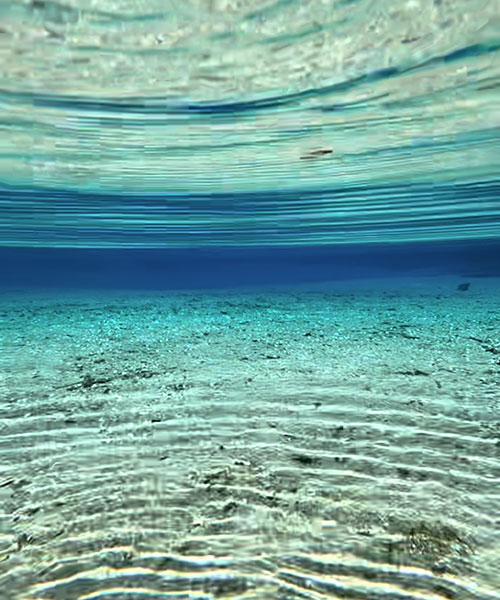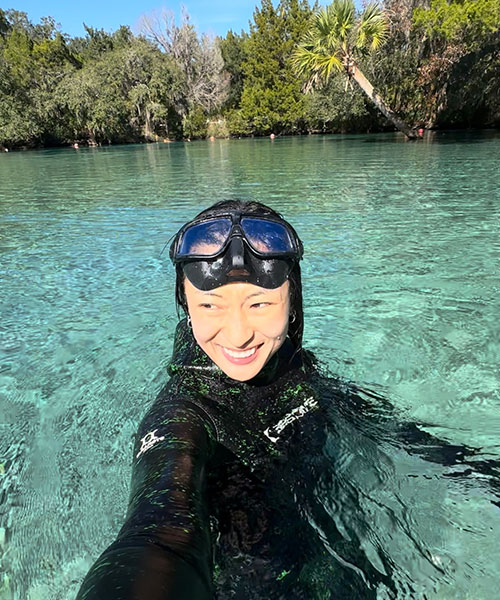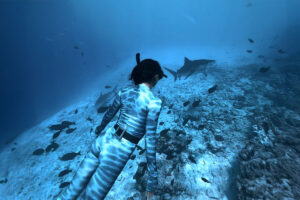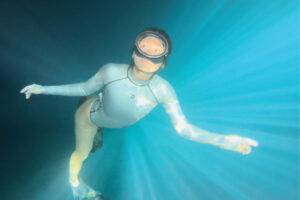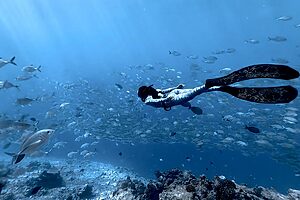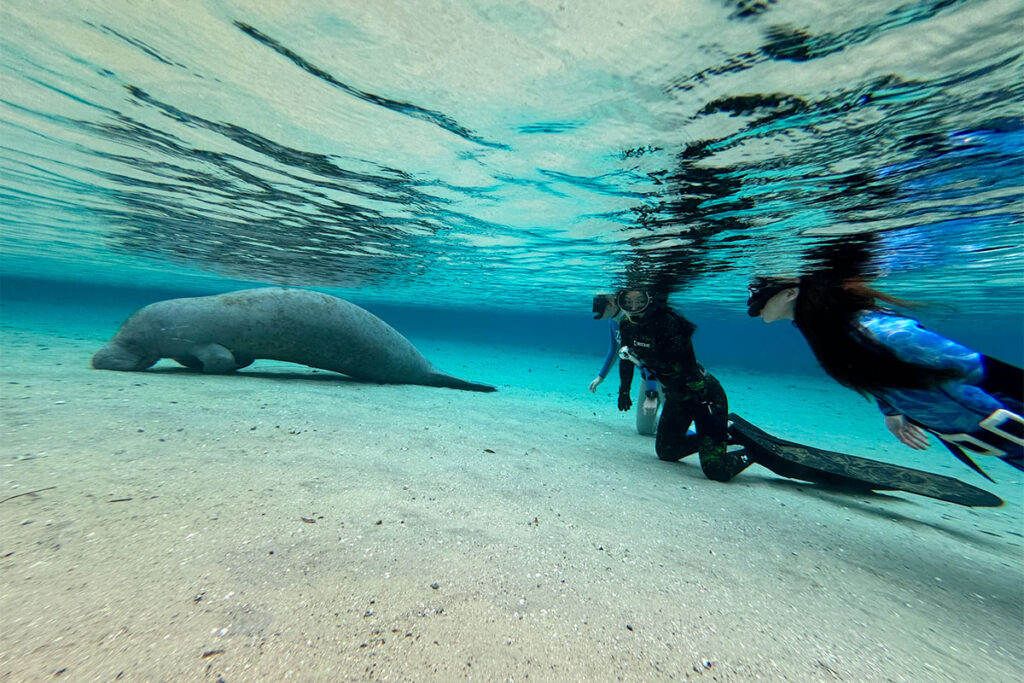
If you’ve ever scrolled through Instagram and stumbled upon videos of adorable, slow-moving sea potato floating peacefully in crystal-clear water, you’ve probably seen a manatee. That’s exactly how I first discovered them—and I instantly knew I had to see them in real life! Last winter, I finally made it happen! I traveled to Florida to swim with these incredible creatures and let me tell you—manatees are even more adorable in real life than I ever imagined.
But before you go diving in, you might be wondering: Are manatees dangerous? The short answer is no. These gentle marine mammals are some of the most peaceful creatures in the ocean. However, there are still important things to know about how to safely and respectfully interact with them. In this guide, I’ll cover fun facts about manatees, the best places to see them, and essential tips for a responsible manatee encounter.
Manatee vs. Dugong: What’s the Difference?
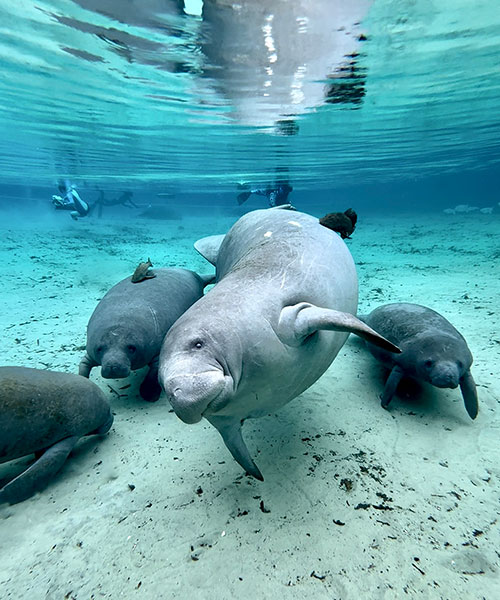
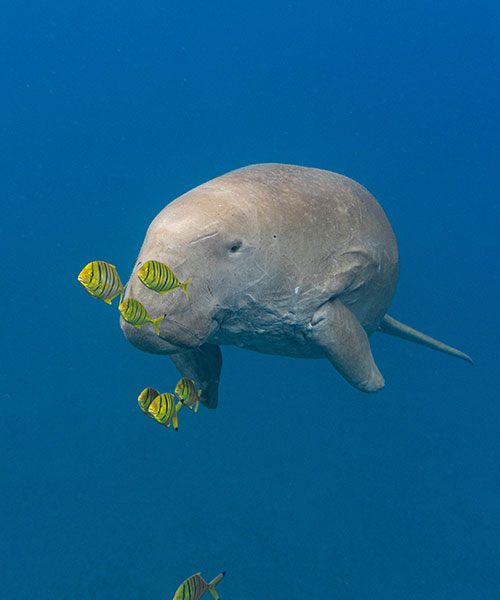
Many people confuse manatees with their close relatives, dugongs. While they look similar, there are some key differences:
- Manatees have paddle-shaped tails, while dugongs have fluked tails like dolphins.
- Dugongs live in saltwater, mainly around Australia and Southeast Asia, while manatees can survive in both freshwater and saltwater.
- Manatees are larger and more social, often seen in groups, while dugongs tend to be more solitary.
Fun Facts About Manatees:
- Manatees are 100% herbivores. They spend most of their time grazing on seagrass and other aquatic plants.
- They nurse their babies under their armpits. Yes, you read that right! Manatee calves find milk from nipples located in their mother’s armpit area.
- They can hold their breath for about 20 minutes. Though they usually surface for air every few minutes, they can stay underwater longer when resting.
- Manatees are closely related to elephants. They even have similar toenails on their flippers!
Are Manatees Vegan? What Do They Eat?
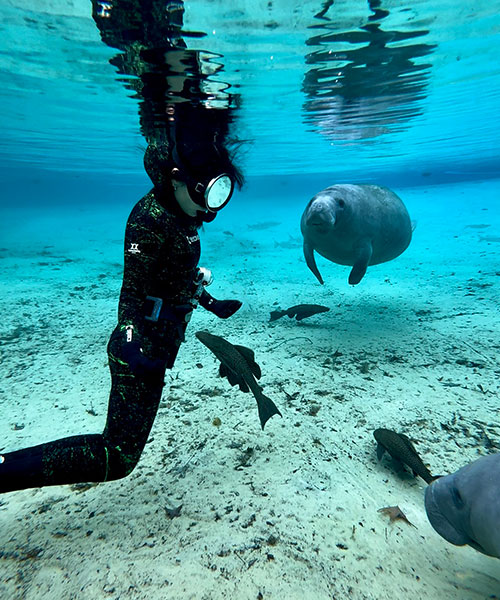
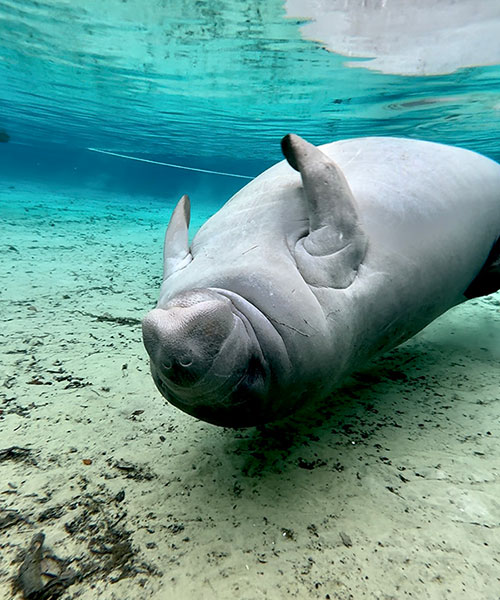
Yes! Manatees are herbivores, and their diet consists mostly of seagrass, algae, and other aquatic plants. They can eat up to 10% of their body weight in food each day—which is a lot, considering they can weigh over 1,000 pounds (450 kg)!
Manatees have a unique way of feeding. They use their prehensile lips to grab plants and pull them into their mouths. And if you ever wondered how baby manatees nurse, here’s a surprise—their nipples are located under their flippers, kind of like an armpit!
Why Do Manatees Migrate to Florida in Winter?
Manatees are warm-water creatures, and when ocean temperatures drop below 68°F (20°C), they seek shelter in Florida’s natural springs, where the water stays around 72°F (22°C) year-round. These gentle giants don’t have blubber like whales, so cold water can be life-threatening for them. That’s why winter is the best time to see manatees in large numbers!
Where Can You See Manatees?
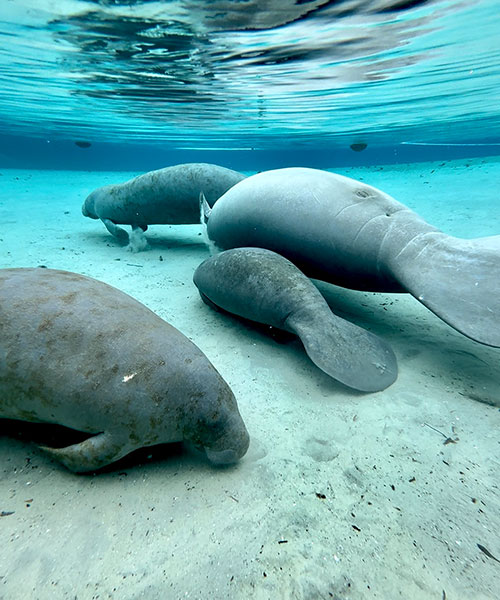
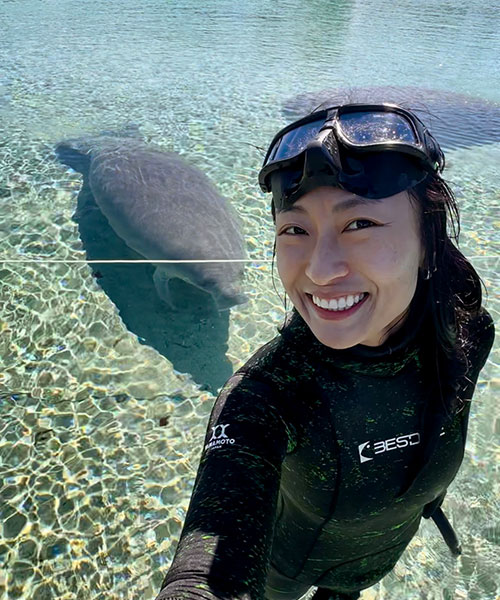
Crystal River, Florida, is the manatee capital of the world, and for a good reason! Every winter, hundreds of manatees migrate here, seeking refuge in the warm waters of natural springs. If you want a guaranteed sighting, this is the place to go. Other great spots to see manatees in Florida include:
- Blue Spring State Park – A protected area with boardwalk viewing platforms.
- Three Sisters Springs – A stunning, clear-water sanctuary in Crystal River.
- Manatee Springs State Park – Another great spot for snorkeling with manatees.
But Florida isn’t the only place to see manatees! They can also be found in:
- Belize – The warm waters of the Caribbean are home to the West Indian manatee.
- Mexico (Quintana Roo & Yucatán) – Some populations live near Cozumel and the Gulf of Mexico.
- The Amazon Basin – The Amazonian manatee is smaller and lives in freshwater rivers.
- West Africa – The elusive African manatee inhabits coastal estuaries.
How to Swim with Manatees in Crystal River: Tour Guide & Tips
If you want to swim with wild manatees, Crystal River is one of the only places in the U.S. where you can legally do so. Here’s what you need to know:
- Booking a Tour: It’s best to book a guided manatee tour. Tours typically last 3-4 hours, with a small group of 6-12 people per boat.
- What to Bring: A swimsuit, towel, warm layers for after the swim, and a snorkel mask. Some tours provide wetsuits, which help with buoyancy and warmth.
- Best Time to Go: The peak season is December to March, when the most manatees are in the springs.
- Manatee Etiquette: Stay calm, float on the surface, and never chase or touch a manatee. Let them come to you!
- What to Expect: You’ll gently enter the water and float quietly while manatees glide past you. Some may even be curious and approach you!
Are Manatees Dangerous to Humans?
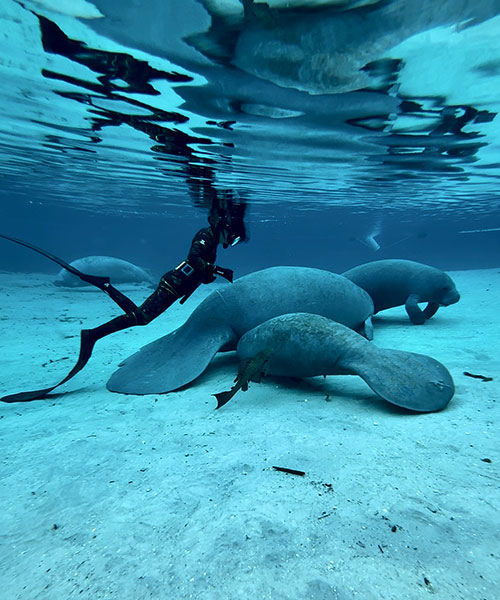
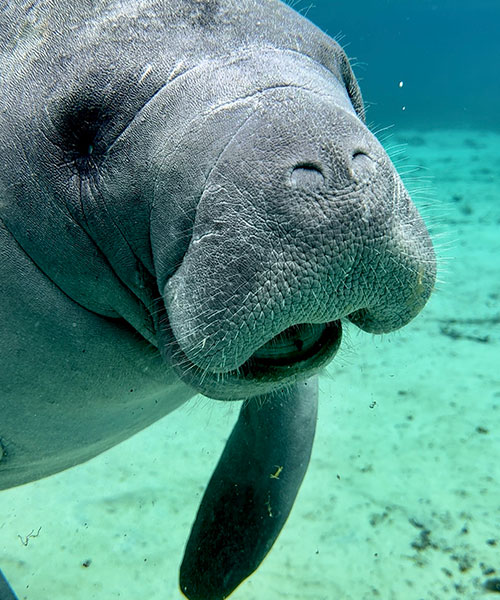
Absolutely not! Manatees are one of the most docile marine species and have no natural aggression towards humans or other animals. If anything, humans are a greater threat to manatees—boat strikes, pollution, and habitat destruction are some of the biggest dangers they face.
That’s why when swimming with manatees, it’s crucial to respect their space and follow conservation guidelines.
My Camera Gear: How I Captured This Incredible Experience
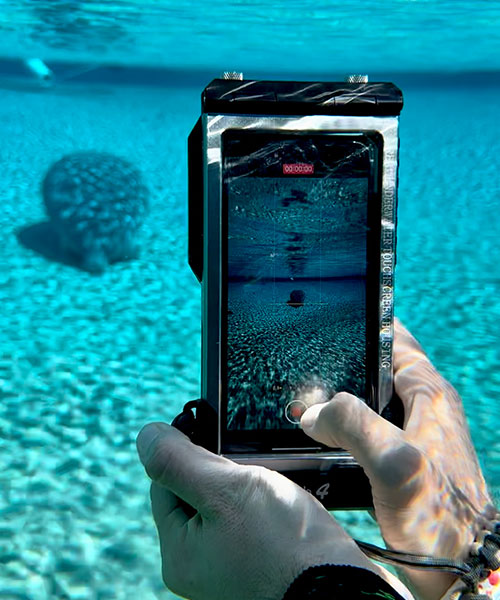
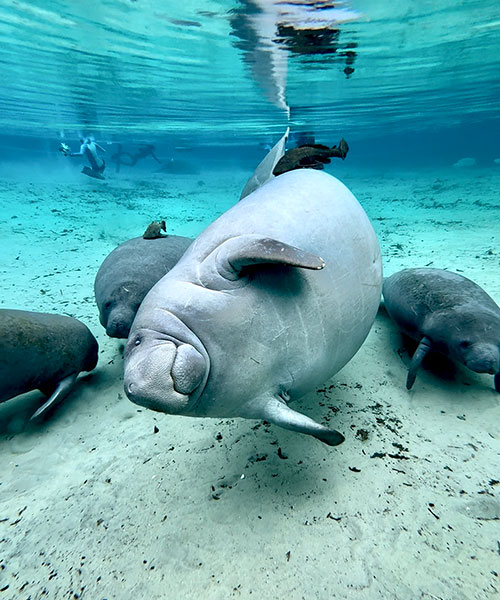
All of the videos and photos I took on this trip were captured using my iPhone inside the DIVEVOLK SeaTouch4MAX Plus underwater phone housing. I’ve been traveling and diving with this case for over two years now, and I can’t recommend it enough! It allows me to capture professional-quality underwater shots while keeping my phone completely safe.
Want to know more? Read my full review of the DIVEVOLK underwater phone case here. Plus, if you’re thinking of getting one, check out the discounts and freebies you can get when ordering with my DIVEVOLK discount code “DIVETIAN6” !
Final Thoughts
These gentle giants deserve all the love and protection we can give them. If you ever get the chance to see them in the wild, be respectful, follow the rules, and cherish the moment. And if you’re looking for a winter adventure, Florida’s manatee season is waiting for you! And yes, I’d love to travel to Florida again to see them!
